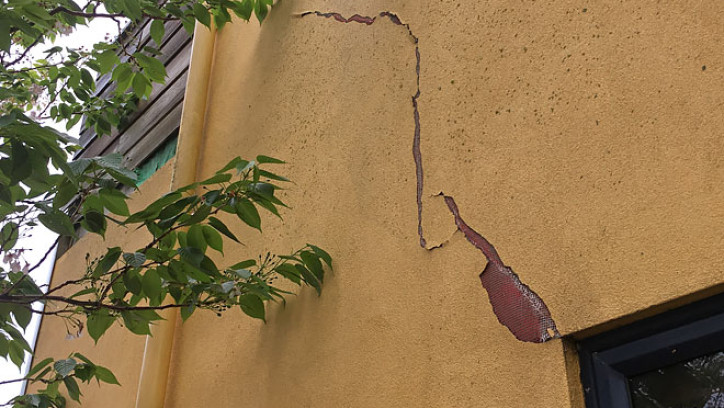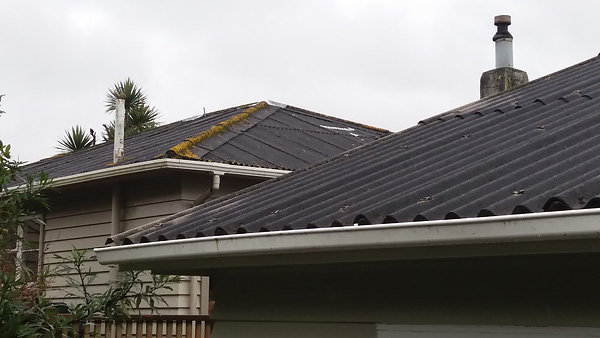Checking a property for contamination and house condition
Last updated: 9 August 2023

Before you buy or build, it's worth checking what condition any existing building is in, and whether the property is potentially contaminated with hazardous substances.
Check property for risks and hazards
One of the main purposes of the New Zealand Building Act is to ensure that “people who use buildings can do so safely and without endangering their health” (Building Act 2004, Section 3a).
By thoroughly checking the condition, risks and potential contamination hazards associated with the property, you will be better placed to deal with any potential issues and avoid expensive remediation later on. Likely issues include:
- house condition, such as deterioration of the cladding and structure due to poor workmanship or lack of maintenance
- risk from hazards such as contamination by chemicals and hazardous substances.
TIP - Earthquakes and other natural hazards
Building a more resilient home has information about earthquakes and other natural hazards.
House condition
It makes good sense to commission an independent inspection and report on an existing home (new or old) before deciding to purchase it.
The condition of homes is generally related to their age, design, quality of construction, the materials used in their construction and the levels of maintenance that have been carried out over the life of the building.
If you are building a new home or purchasing a newly built home, it should be in good condition and meet the relevant Building Code requirements.
However, materials, fittings and fixtures deteriorate over time with exposure to the weather, and wear and tear from occupants’ activities. Some elements will eventually need replacing when they reach the end of their useful lives, eg tapware, or even some claddings.
An independent inspection report should identify any obvious issues with the home and highlight what items will require maintenance or replacement in the near future.
Weathertight issues
Many detached houses and apartments built during the 1990s to 2005 have inherent design and construction deficiencies that can lead to leaks and result in damage to framing and linings. The problem is most common with more complex designs over one storey high with so-called ‘monolithic’ claddings without a drainage cavity behind them. These claddings usually have a plastered finish applied over a sheet material and it can often be very difficult to see any signs of leaks and deterioration. Repairs can be very costly. Ask the sellers if they have had any leaks and if so, whether an invasive inspection has been carried out and any issues repaired.
Check with the local council to see if there is any information on file as repairing these houses usually requires a building consent. If it’s been through the Weathertight Homes process, this will be recorded on the LIM, which you can purchase from the council. If you are looking at an apartment or unit in a complex with known weathertightness issues, check to see what the body corporate’s plans are regarding repairs, including timing and expected contributions from owners.
Signs of a leaky home has more useful information on leaky buildings.
TIP - Weathertight issues - get an inspecton/report from a specialist
If you are thinking of purchasing a property with weathertightness issues, ensure that you have a good idea of the extent of work that is required, and how much it will cost.
It is best to commission an inspection and report from a building assessor who is qualified to undertake weathertightness inspections.
- The New Zealand Institute of Building Surveyors website has a list of their members.
- The Building Officials Institute of New Zealand website has a list of their accredited surveyors.
Chemicals and hazardous materials
Before you decide to buy a property or start building on a site, it's worth finding out whether it contains hazardous materials such as asbestos, lead-based paint or methamphetamine (also known as 'P').
Lead
Lead-based paints were phased out in the early 1980s and older houses are likely to have lead-based paint - particularly on timber joinery and weatherboards. The main risk is when paint is being removed by scraping or sanding. Appropriate protective gear must be used and the paint collected and disposed of safely.
Simple kits to test for lead can be purchased at some hardware stores and paint stores.
For more information see:
- Removing lead-based paint on the Ministry of Health website
- Guidelines for the management of lead-based paint on the Worksafe website.
Asbestos
Asbestos was used in a number of building materials up to the 1990s. These included fibre cement claddings, textured coatings (particularly on ceilings), some roofing products and backing materials for linoleum flooring. Where these materials are in sound condition and undisturbed they present little health risk. However, any future maintenance or alterations that disturb these materials could potentially release asbestos fibres which are a health hazard if inhaled.
Specialist asbestos removers may be required and asbestos can only be disposed of at certain landfills.
Asbestos on the Worksafe website has more information.

Land contamination
Chemical contamination can also arise from previous uses of a site. Some uses that could potentially generate chemical hazards include:
- a meatworks
- an orchard or vineyard
- a timber treatment plant
- a chemical dump
- a landfill
- a petrol filling station
- some farming activities
In most cases, it is best to have the site checked for contamination or avoid sites where there is a risk of chemical hazards, as there may be health risks and considerable costs to clean them up.